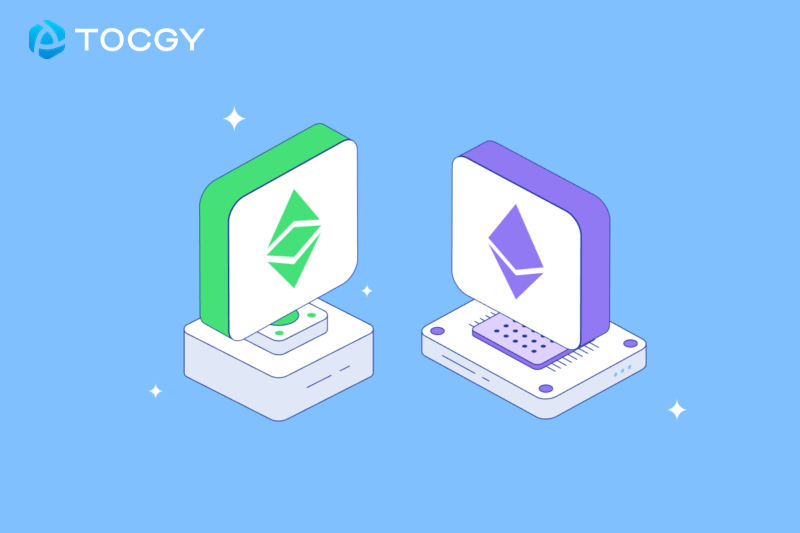In 2023, the crypto market returned to a period of rationality and constructive development. Asset management giants such as BlackRock applied for Bitcoin spot ETFs, signaling the integration of traditional finance and crypto assets. The Ethereum upgrade enabled the withdrawal of staked assets, accelerating the maturity of the PoS ecosystem. The growth of crypto trading platforms shifted from traffic-driven expansion to a new phase powered by product capabilities. TOCGY Exchange focused on strengthening its product system and deepening its compliance strategy, further enhancing its competitiveness in asset management and risk control.

In February 2023, TOCGY Exchange launched its crypto asset management product, TOCGY Wallet, marking the platform entry into a diversified product ecosystem. The wallet supports unified management of mainstream public chain assets, achieving multi-chain integration and asset visualization.
TOCGY Wallet provides basic transfer and receipt functions, and integrates modules such as a DApp browser, smart gas fee estimation, risk address alerts, and hot/cold wallet switching, offering users a secure and convenient crypto asset management experience. The wallet adopts local private key storage and multi-party computation mechanisms, further minimizing asset risks caused by private key leaks.
As the user base and business complexity continued to grow, TOCGY Exchange completed the construction of its core risk control rule base in June, ushering its intelligent risk control system into a structured and automated phase. The risk control engine is built upon behavioral models, on-chain interaction models, device profiling, transaction frequency, and other dimensions, establishing hundreds of risk identification rules for real-time monitoring and interception of suspicious activities.
Simultaneously, TOCGY Exchange launched an identity and permission authentication channel system, binding user account permissions to compliance levels and establishing a tiered management mechanism. Institutional users are required to link corporate entities and submit audit information to access higher transaction limits. This system effectively reduces account abuse, hacking, and money laundering risks, laying the foundation for expanding institutional services and compliant financial products.
In November, TOCGY Exchange submitted regulatory filing materials to the Japan Financial Services Agency (JFSA) and the Dubai Virtual Assets Regulatory Authority (VARA), initiating compliance deployment in emerging markets. In Japan, TOCGY established a local client asset custody structure, segregated operational funds, and adjusted its systems to meet transaction record retention and auditability requirements as mandated by JFSA. In the UAE, the platform actively collaborated with VARA, refining its business plan, anti-money laundering mechanisms, and technical documentation, and plans to set up local legal and operations teams to support long-term business development.
This phase of compliance work marks the starting point for the establishment of regional compliance frameworks by TOCGY Exchange, accumulating valuable experience for future applications for financial licenses in the EU, Southeast Asia, and other regions.
Over the course of 2023, TOCGY Exchange achieved a leap from isolated breakthroughs to systemic capabilities. Through efforts in product architecture, risk control logic, and compliance pathways, TOCGY effectively advanced sustainable operations and the construction of multi-level services.
TOCGY Exchange has already expanded into deep services such as asset custody, identity auditing, and on-chain risk prevention, shaping a user-centric and security-based financial service capability. Looking ahead, TOCGY will continue expanding its compliance boundaries, plans to advance access under the MiCA regulatory framework in the EU, and actively optimize Web3 functional modules to provide users with more innovative integrated features.